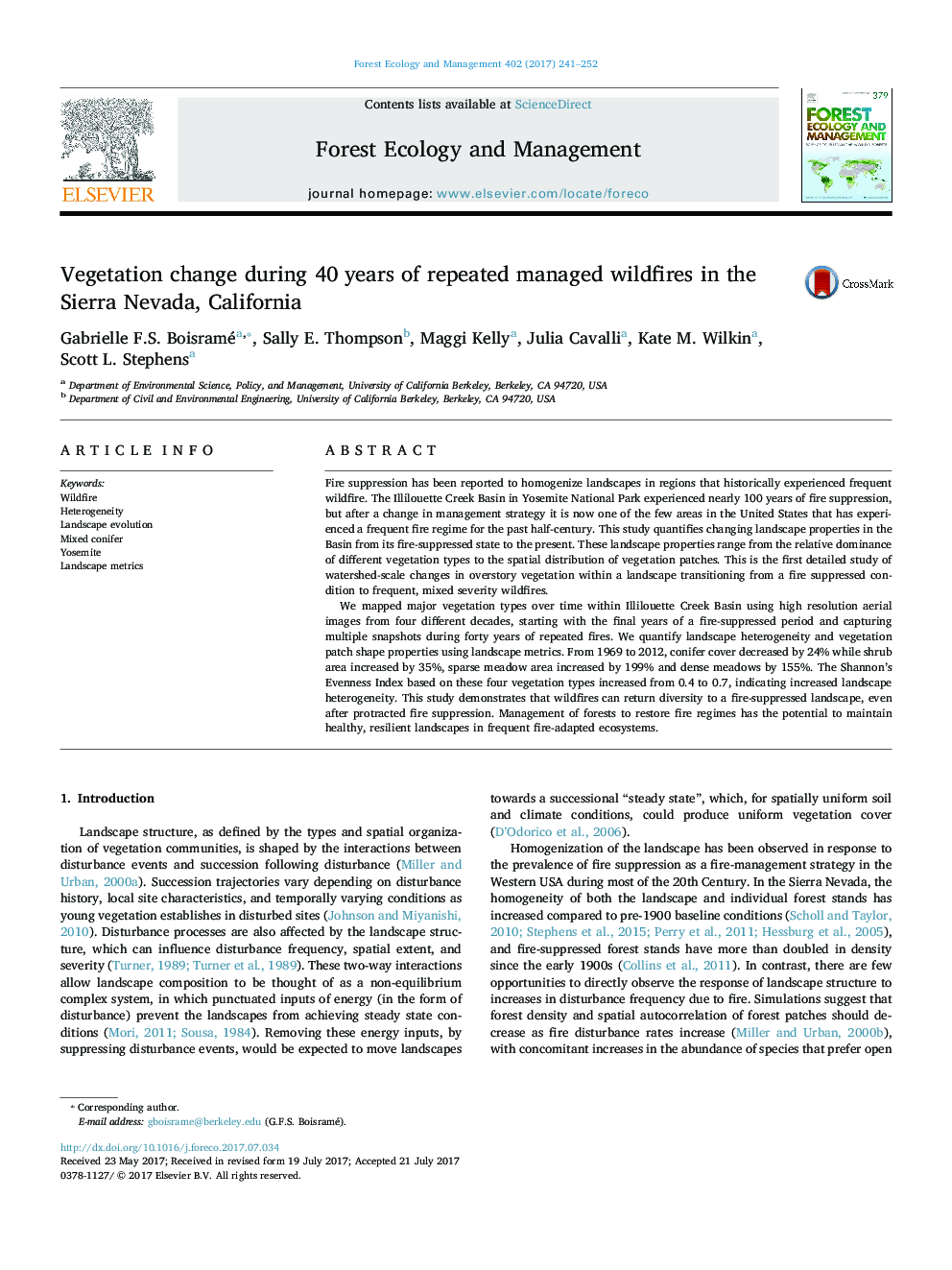| Article ID | Journal | Published Year | Pages | File Type |
|---|---|---|---|---|
| 4759357 | Forest Ecology and Management | 2017 | 12 Pages |
Abstract
We mapped major vegetation types over time within Illilouette Creek Basin using high resolution aerial images from four different decades, starting with the final years of a fire-suppressed period and capturing multiple snapshots during forty years of repeated fires. We quantify landscape heterogeneity and vegetation patch shape properties using landscape metrics. From 1969 to 2012, conifer cover decreased by 24% while shrub area increased by 35%, sparse meadow area increased by 199% and dense meadows by 155%. The Shannon's Evenness Index based on these four vegetation types increased from 0.4 to 0.7, indicating increased landscape heterogeneity. This study demonstrates that wildfires can return diversity to a fire-suppressed landscape, even after protracted fire suppression. Management of forests to restore fire regimes has the potential to maintain healthy, resilient landscapes in frequent fire-adapted ecosystems.
Related Topics
Life Sciences
Agricultural and Biological Sciences
Ecology, Evolution, Behavior and Systematics
Authors
Gabrielle F.S. Boisramé, Sally E. Thompson, Maggi Kelly, Julia Cavalli, Kate M. Wilkin, Scott L. Stephens,
